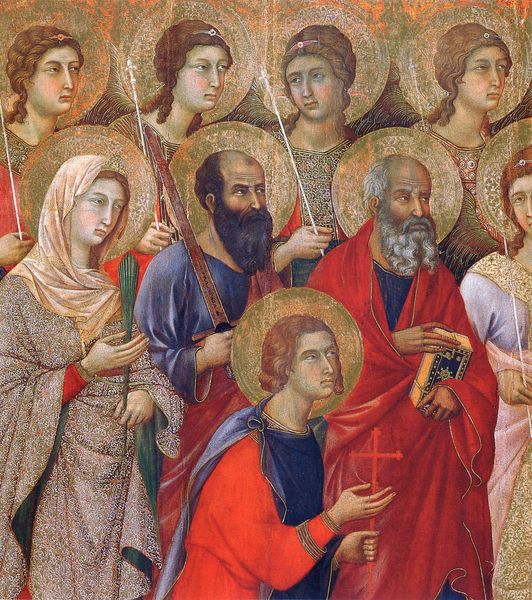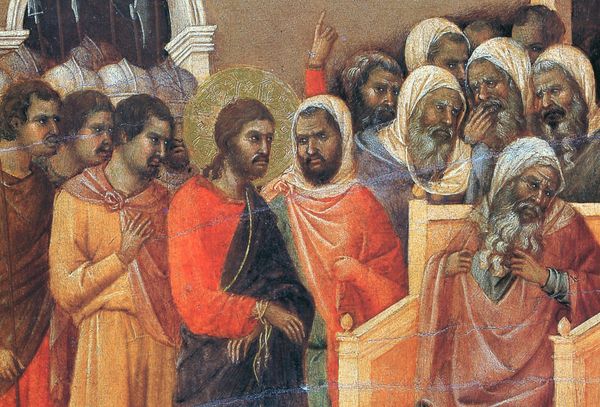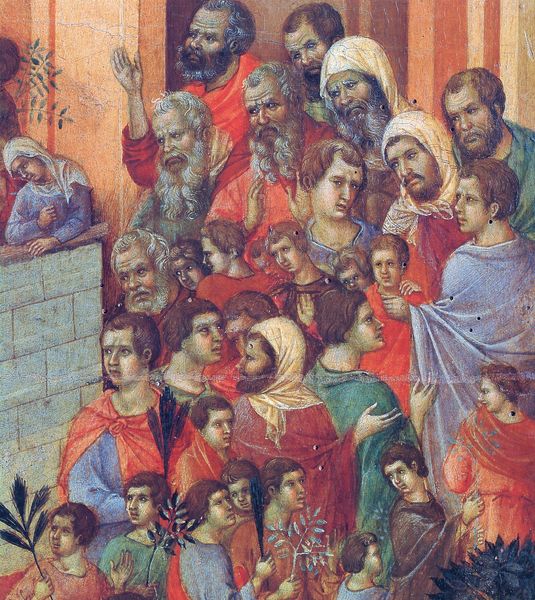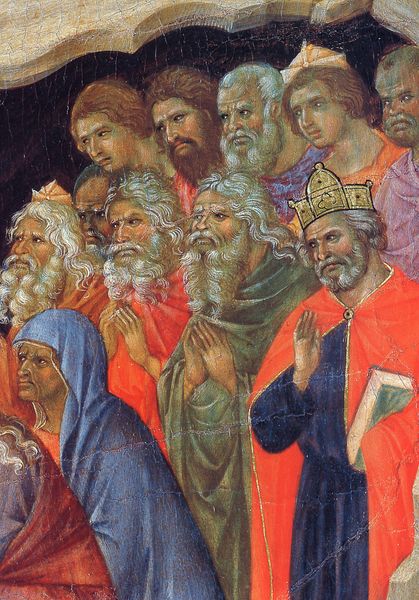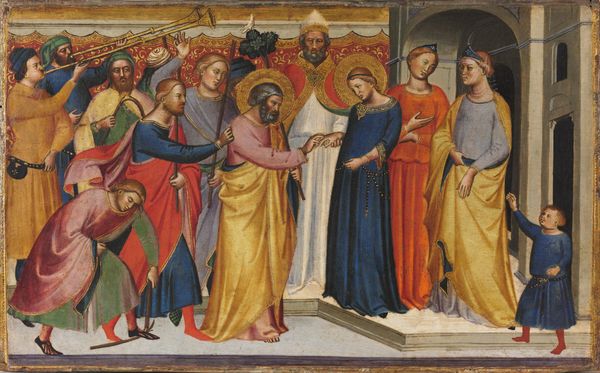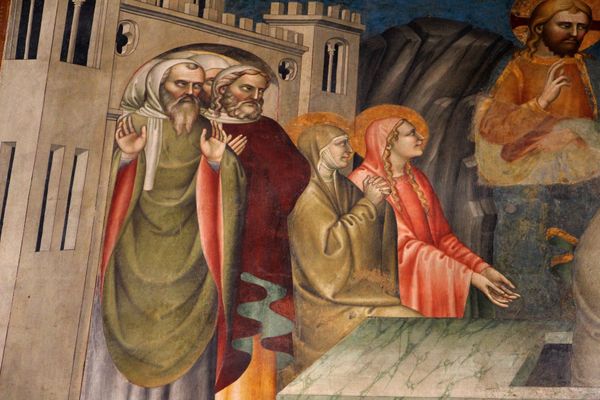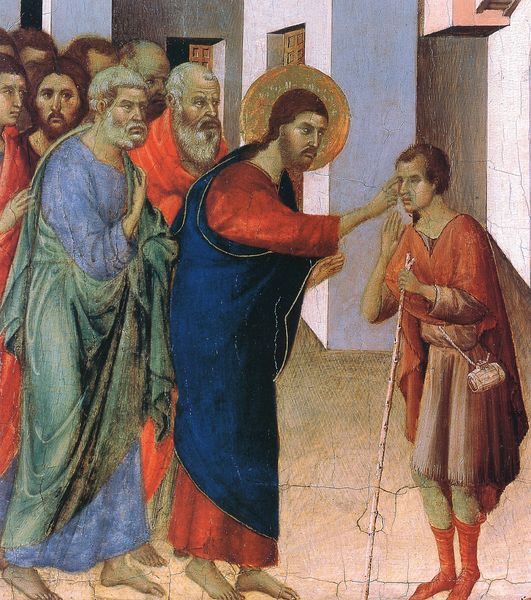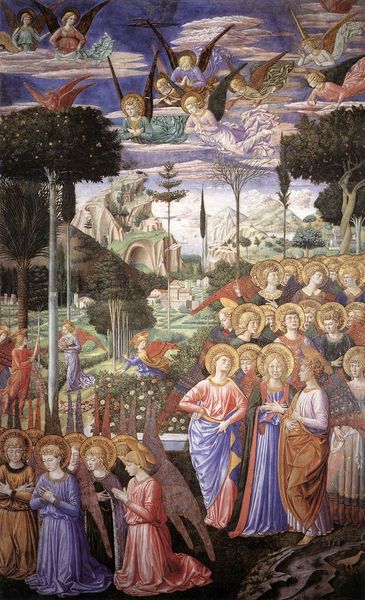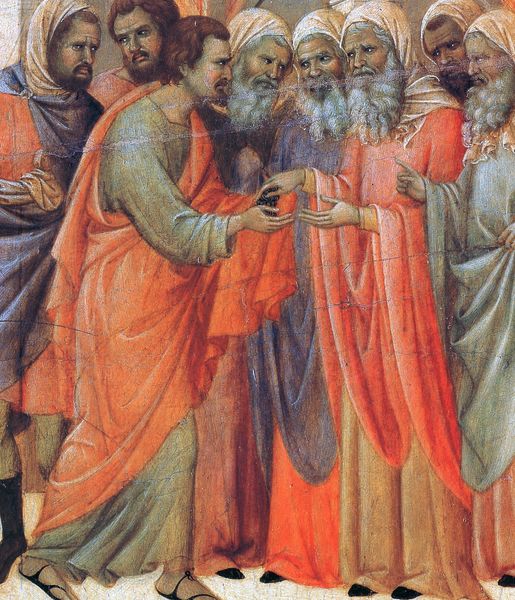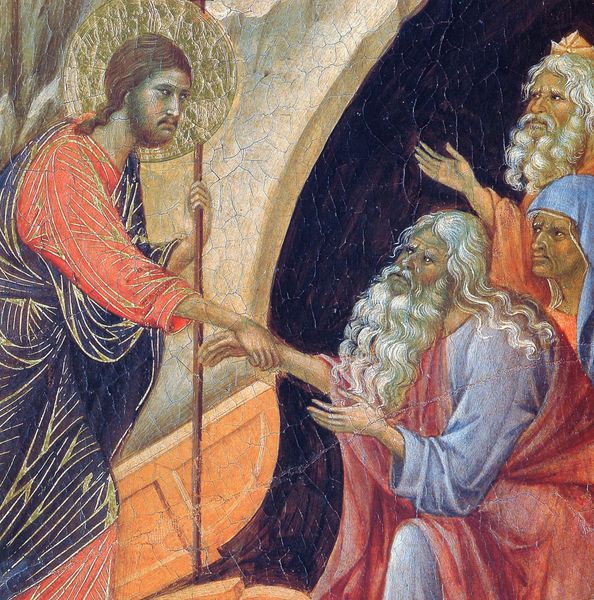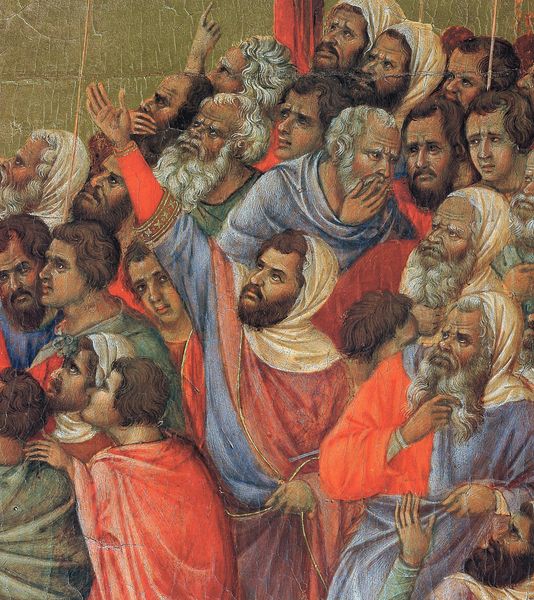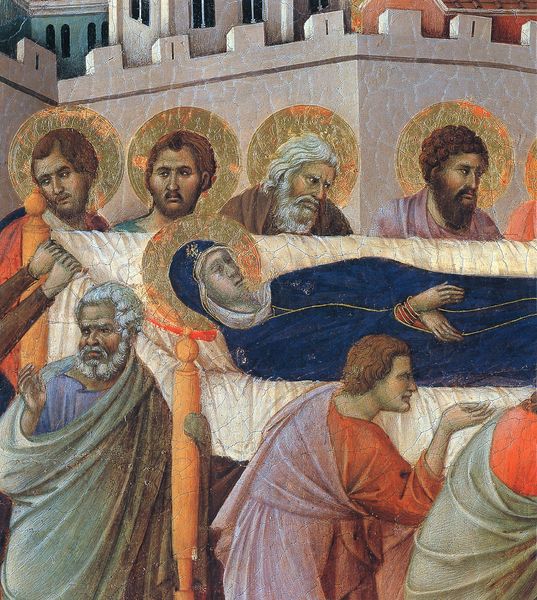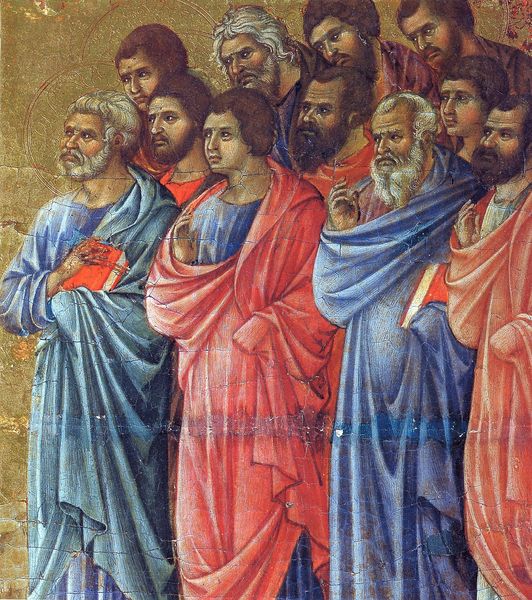
panel, tempera
#
byzantine-art
#
medieval
#
panel
#
tempera
#
prophet
#
sienese-school
#
figuration
#
oil painting
#
christianity
#
history-painting
#
italian-renaissance
#
christ
Copyright: Public domain
Curator: Looking at this section of Duccio’s *Madonna and Child on a Throne* dating back to 1311, made with tempera on panel, what stands out to you initially? Editor: The material impression is strong; the sheer flatness of the figures, their simplified forms...it creates this potent sense of otherworldliness almost mechanically produced, as if stamped rather than painted by a human hand. Curator: Exactly. It's the careful deployment of symbols: the halos, the arrangement of figures in a hierarchical composition, and the individual iconographic markers for each saint – keys for Peter, the lamb for St. Agnes – they are presented so directly, conveying spiritual concepts clearly to the viewer. It is pure information made visually arresting. Editor: Yet there’s the undeniable craftsmanship. Tempera itself would have been laborious to produce, with its slow layering of pigment and egg yolk to achieve that brilliant, light reflecting gold leaf and luminous hues. There’s intense planning and even repetition suggesting something almost akin to an assembly line process. Curator: You touch on something key. It is mass production in the pre-industrial age, ensuring availability and standardized access to the sacred, while individual figures represent a lineage tracing back to ancient figures and values. The material form serves a deeper societal need. Editor: A very pragmatic mysticism, I like that. The gold isn't just ornamental; it represents wealth deployed strategically to support systems of power. Thinking about that panel now, I wonder how much artistic freedom there was within these strict conventions of process, format, and imagery. Curator: Perhaps artistic innovation came less from overt alteration and more from the subtler elements of emotional expression; observing the faces of these holy figures, we catch shades of pathos, or introspection that quietly enrich the expected archetypes. They seem quite individualized despite following patterns, wouldn't you say? Editor: Definitely. It adds a subtle complexity that speaks to art's intrinsic paradox, it fulfills ideological objectives while leaving its own trace. Curator: For me, I think seeing the intersection of cultural meaning embedded within the painting is so illuminating about historical beliefs and humanity’s enduring relationship with the divine. Editor: And for me it really drives home how social forces are expressed in tangible materials; it grounds artistic endeavor within history, economy and class. Thank you, that was illuminating!
Comments
No comments
Be the first to comment and join the conversation on the ultimate creative platform.
